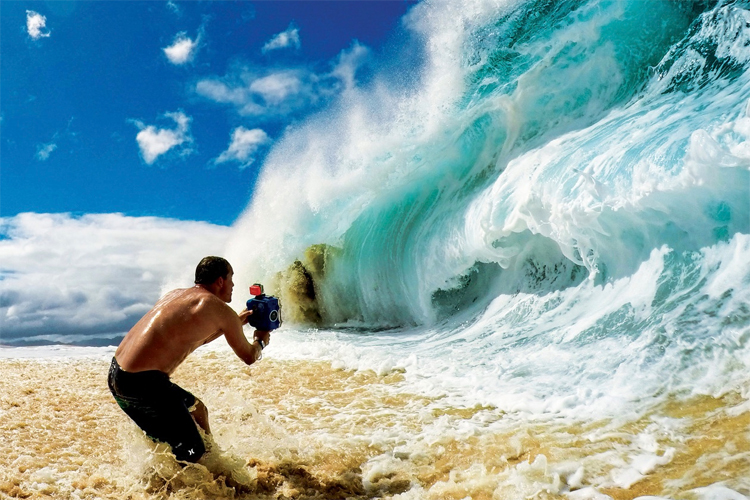Clark Little is a professional surf photographer from Hawaii, known for his striking and dramatic images of ocean waves and powerful shore breaks.
His stunning pictures have been featured in worldwide publications and have earned him acclaim from surfers and art lovers alike.
Little is particularly known for his unique perspective, which involves getting as close as possible to the waves, often using specialized equipment.
In addition to exhibiting his photographs in galleries and publishing several books, Little has also worked on commercial projects and has been featured in various media outlets.
He is considered a pioneer in wave photography and has inspired many other photographers to capture the ocean's beauty from unique angles.
Clark Little began taking photographs of waves when he least expected but quickly gained recognition for his work.
Here are some interesting facts about the man who's not afraid of getting pounded by huge waves and changed surf photography almost by accident.
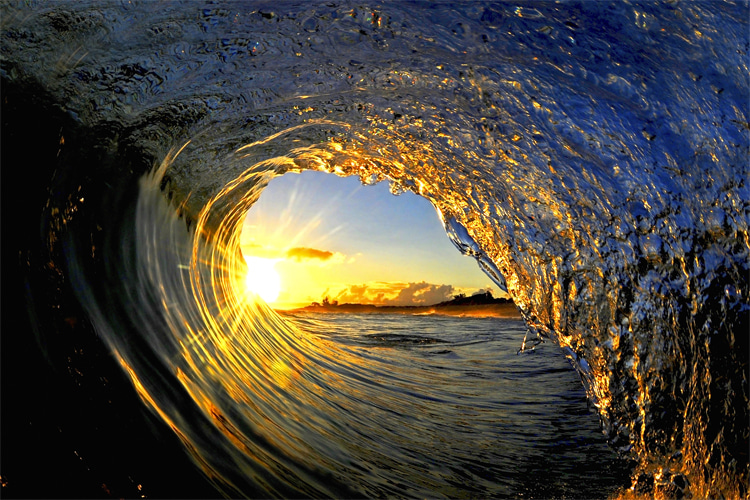
Photography Was in the Blood
Clark Little was born in Napa, California, on November 9, 1968. His family moved to Hawaii when he was just two years old.
Interestingly, his father was a photography teacher for 30 years - first at Punahou School and then at Leeward Community College.
Clark started bodyboarding, surfing, bodysurfing, and playing with waves from a very early age, alongside brother Brock Little, who went on to become an accomplished big wave surfer.
At 22, Clark embraced a city county job at a botanical garden in Oahu.
He supervised and oversaw 27 acres of native and tropical plants from all over the world. Little loved it because "I am a Nature freak."
One day, his wife brought home the image of a wave; she wanted it featured on the bedroom wall.
But Little decided he was going to shoot a better one. What he didn't know was that the unexpected event would lead him to a radical career shift.
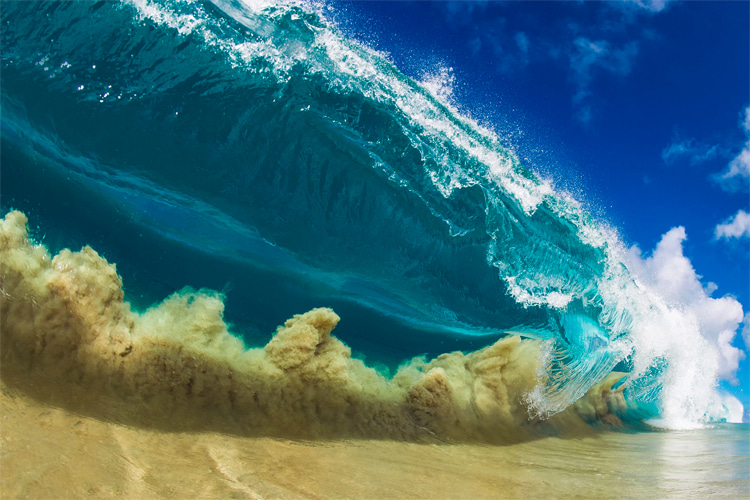
Wave Photography as a Full-Time Job
In 2007, after carefully thinking about whether he should take the risk, Little resigned from his 17-year position at the botanical garden to dedicate his working time 100 percent to wave photography.
"It was the best decision I ever made. I got exactly what I wanted from it and more," the lensman once revealed.
"If I woke up and this was my dream, I would be like, 'Wow! That was cool! I wish it was real...' But it is!"
Clark started with a disposable camera and then never stopped updating his equipment.
"At the time, not many people were getting into big shorebreak waves and going inside and capturing the raw beauty of the tube."
The photos immediately traveled the world, and so did Clark Little.
"I didn't have a recipe or a plan. And I had to learn the camera."
The surf photographer says he feels he knows when he got an extraordinary shot - even before arriving home and checking it on the computer to see if everything is in focus.
But Little also adopted a methodic approach to his professional activity. So, he always checks the surf forecast before making his way to the beach for a shooting session.
He wants to know the swell direction, the wind, and the cleanliness of the water to get the perfect photo in the ideal spot.
The California-born surfer believes that Hawaii has the perfect conditions for his type of work thanks to the weather patterns, the sun, the beautiful white beaches, and the coconut trees.
He confesses he likes to get thrown and tossed around, pounded, and slammed into the sand to get the perfect shot. It's part of the game.
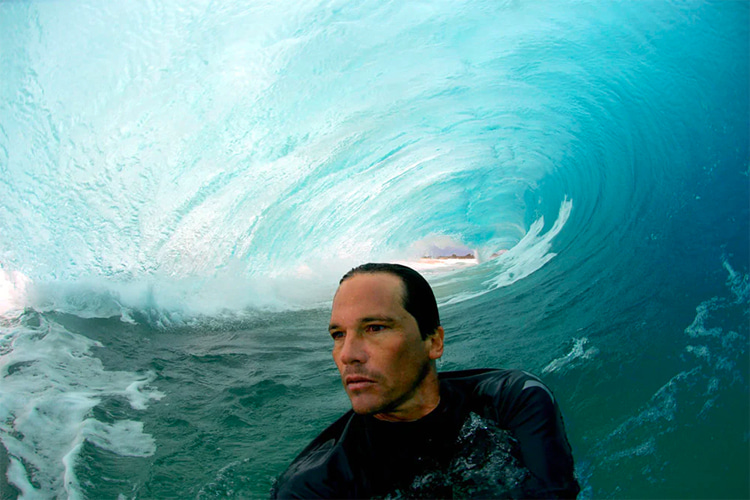
New Ventures
In 2011, the lensman opened Clark Little Gallery in Haleiwa, on the North Shore of Oahu, Hawaii.
The 1,000-square-foot space was designed by Hawaii fashionista Deb Mascia and is situated in the town's center, just minutes away from the beaches where Clark captures most of his powerful images.
In his first four years as a professional photographer, Clark gained national and international recognition for his work with appearances on multiple national television shows, including:
- Good Morning America;
- Inside Edition;
- The Today Show;
- ABC World News Now;
Clark's work has been featured in many publications, including National Geographic, Nikon World, Paris Match, La Vie, Sierra, Geo, Nature's Best Photography, PhotoLife, Rangefinder, Stern-View, Surfer's Journal, Surfer Magazine, Surfer's Path, Hana Hou (Hawaiian Airlines) among others.
He also did commission commercial work for companies like Apple, Facebook, Hewlett-Packard, Microsoft, Nike, Starbucks, Toyota, Verizon, etc.
Little once admitted he was annoyed about the copycats who tried to mimic his work.
But later, his mindset changed. "If they're as passionate as me and having fun doing it, I'm all for it."
Today, he sells prints and all sorts of merchandising, including apparel, featuring his world-renowned shorebreak wave photos.
In 2016, film director Peter King shot "Shorebreak: The Clark Little Story." The documentary was showcased in multiple film festivals across the globe.
Throughout his career, the aquatic photographer released three books:
- The Shorebreak Art of Clark Little (2009);
- Clark Little Shorebreak (2014);
- Clark Little: The Art of Waves (2022);
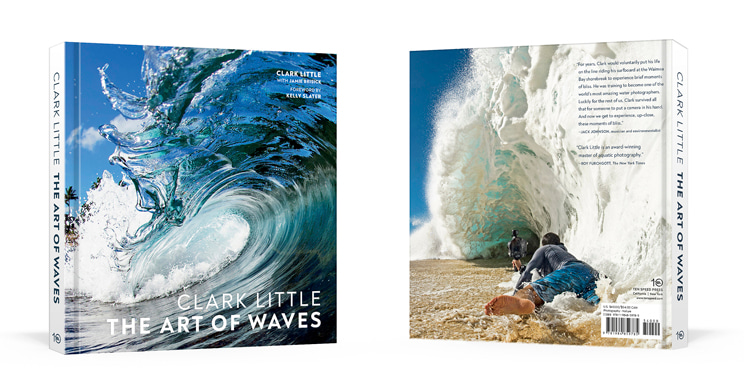
Skills and Fear
The search for the perfect picture takes time and patience. The Hawaiian photographer sometimes spends five or six hours in the ocean.
He became a master of analyzing backwash, the sand-sucking-up patterns, the sunset timings, and where to position, even in the most extreme conditions.
"If you're afraid, you're not getting the shot."
"I am pretty comfortable with 8-10 feet. Fifteen-foot faces are the point where I'm like, 'I don't know if I should go out. Is it worth it?'"
"I think of my family. I know I might get that perfect shot, but I don't want to go to the hospital."
"There are times when I've been caught out in the ocean and wondering, 'Oh my gosh, am I going to make it in? I can't breathe anymore. Here comes another wave.'"
"Sometimes it is so perfect I just jump in, and then I get caught in that situation."
"I try to get up as soon as I can, but sometimes you can get held under for between five, ten, and sometimes 15 seconds."
"The worst thing is staying under for two waves - you always want to pop up before the next wave comes."
Clark Little had a few minor injuries and near-drowning episodes.
And before getting wet, Little always checks his equipment to make sure his settings are right.
He started his career with a Canon camera but is now shooting with Nikon hardware.
Awards and Recognition
Clark Little's work earned him multiple awards and recognitions, including:
- 2019: 10th Most Popular Photographer in the World by XXL PIX;
- 2017: Bud Browne Surf Film Award for "Shorebreak" at Waimea Ocean Film Festival;
- 2016: Audience Award for "Shorebreak" at Maui Film Festival;
- 2015: Pewter Medal at Gold Ink Awards;
- 2011: Oceans Photography Award at Nature’s Best Photography: Windland Smith Rice International Awards (Smithsonian Museum);
- 2011: Endangered Species Award at Nature’s Best Photography: Windland Smith Rice International Awards (Smithsonian Museum);
- 2011: Beaches, Island and Underwater Award (The Great Outdoors in PDN);
- 2011: Maggie Award (Western Publishing Association) for Best Series of Editorial Photographs in View from the Vortex (Sierra Magazine);
- 2010: Pele Award for Photography (American Advertising Federation Hawaii) in Breaking Point (Kahala Magazine);
- 2009: Photograph of the Year at People's Choice Award (Geo Magazine);
To learn more about Clark Little, visit clarklittlephotography.com and follow him on Instagram (@clarklittle) and Facebook (@clarklittlephotography).
